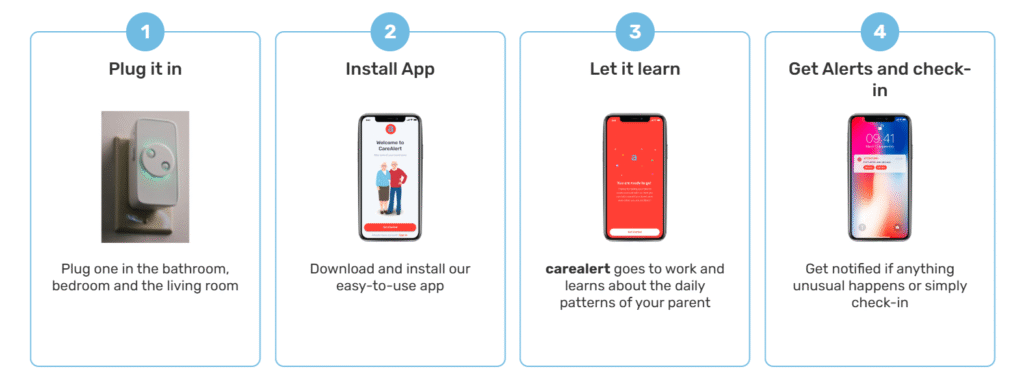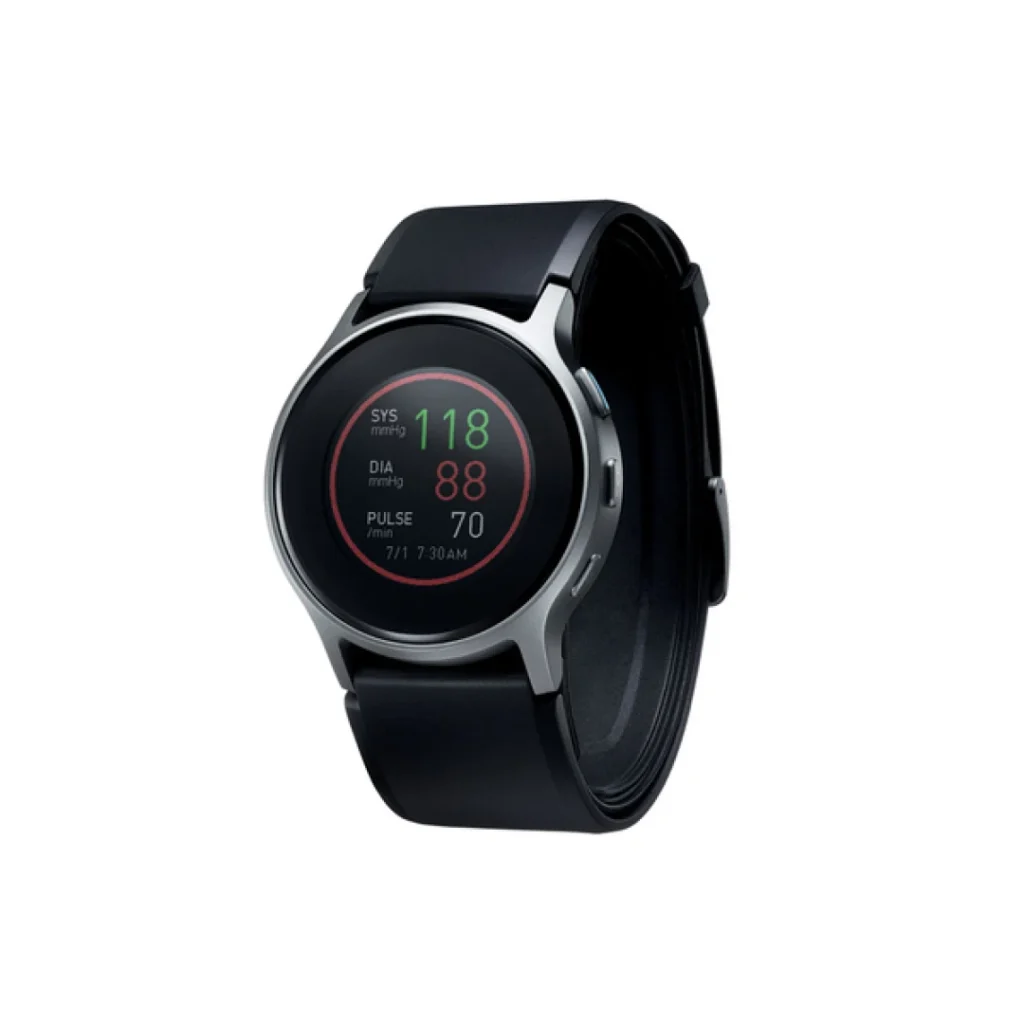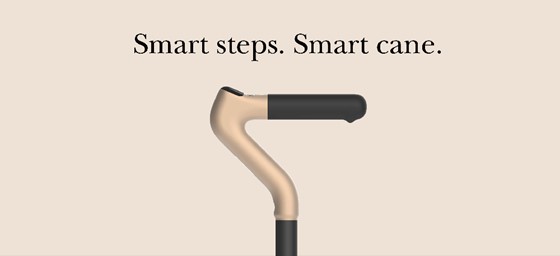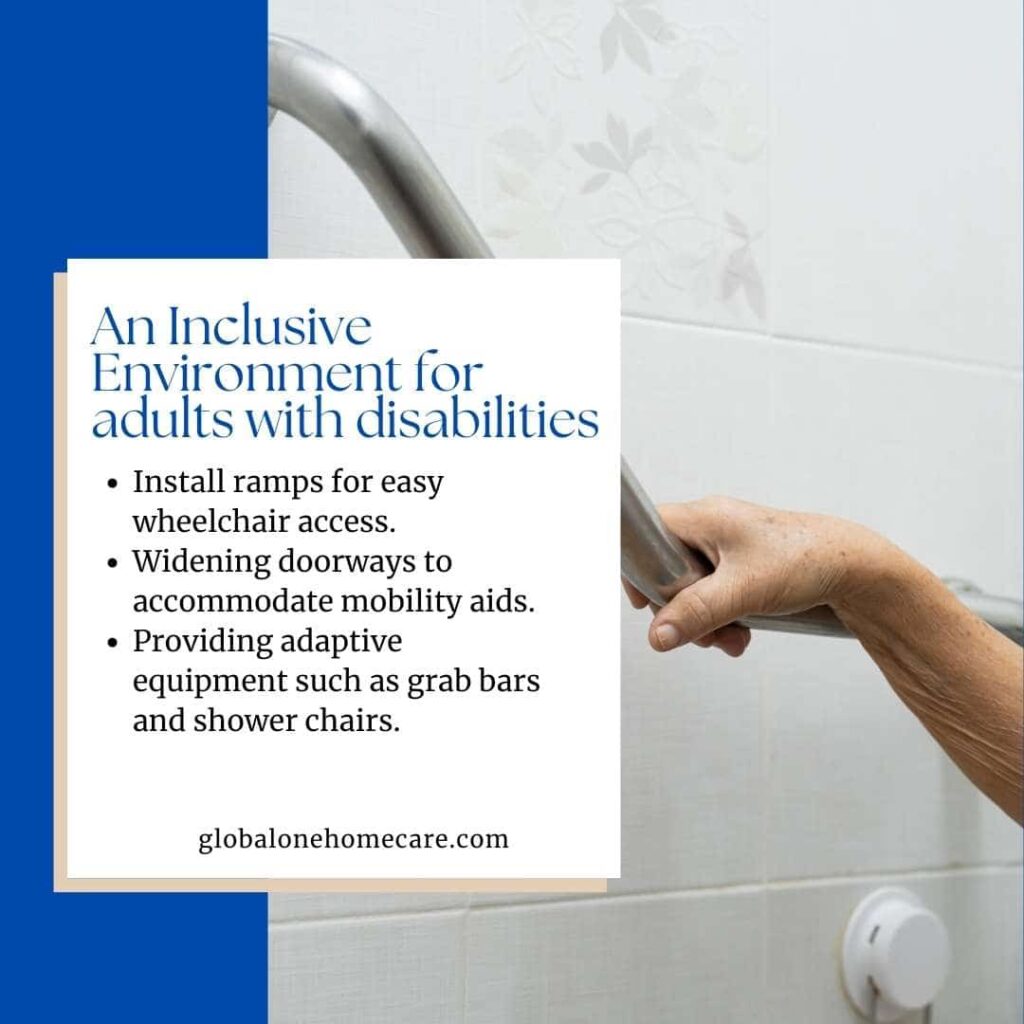Best Walkers for Seniors with Balance Problems
Balance is incredibly important for seniors to stay independent and safe. Being able to walk to the room, or bathroom or garden remains a fundamental need for every aging adult.
You should get the right walker for your aging loved ones, to improve stability, prevent falls, and enhance confidence in walking.
This article presents multiple top walker options for seniors with balance issues, each chosen based on safety, stability, ergonomic design, and ease of use.
We cite clinical research, expert guidelines, and professional reviews (including physical therapists’ insights) to explain why each walker is ideal for seniors with balance problems.
For a broader overview of related devices, explore mobility aids for seniors.
CONTENT:
Standard Walker (Two-Wheeled Walker)
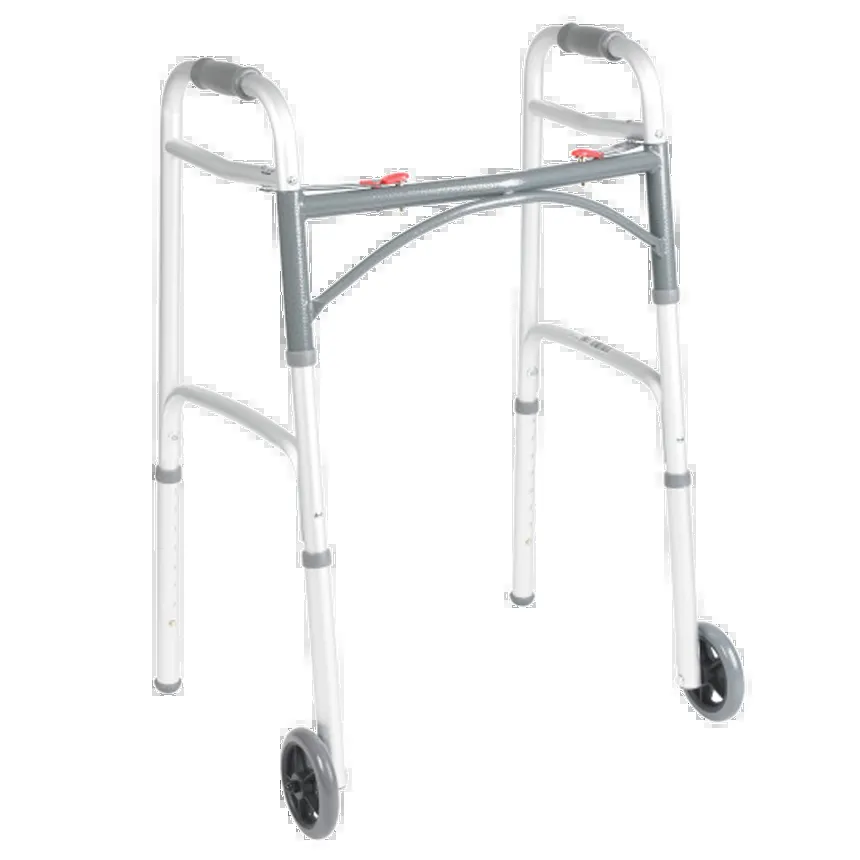
A standard walker is the most stable type of walker, making it a top choice for seniors with serious balance problems.
Its four-point contact (rubber-tipped back legs and wheels or tips in front) provides a wide, steady base of support.
This design supports the user’s weight and improves balance by increasing the base of support.
Many standard walkers can be fitted with two front wheels (as shown) to allow a smoother, continuous gait without needing to lift the walker fully off the ground each step.
Safety & Stability:
Because it doesn’t roll away on its own, a standard/two-wheel walker stays put until the user moves it, significantly reducing risk of uncontrolled rolling on inclines or slippery surfaces.
In fact, medical guidelines recommend standard walkers for individuals with severe gait instability (e.g. due to neuropathy, myopathy, or cerebellar ataxia) who need maximum support.
Because sit-to-stand and tight turns are when most slips happen, choose balance friendly footwear to steady footing.
Ergonomics & Use:
The frame height is adjustable, and when properly fitted to wrist height, it encourages an upright posture (avoiding hunching).
Simple leg strengthening plan improves step control without rushing pace
A downside is that the user must lift or slide the walker forward with each step, resulting in a slower, more methodical walking pace.
However, the addition of wheels and glide caps on the rear can make it easier to push while still maintaining good stability.
Physical therapists at home often train users on these walkers to ensure they maintain an upright posture and step within the walker’s frame for optimal safety.
Overall, a standard two-wheeled walker is an excellent choice when balance support is the top priority, offering a solid and secure aid that significantly lowers fall risk for those with severe balance impairment.
Four-Wheeled Rollator Walker (Rolling Walker with Seat)
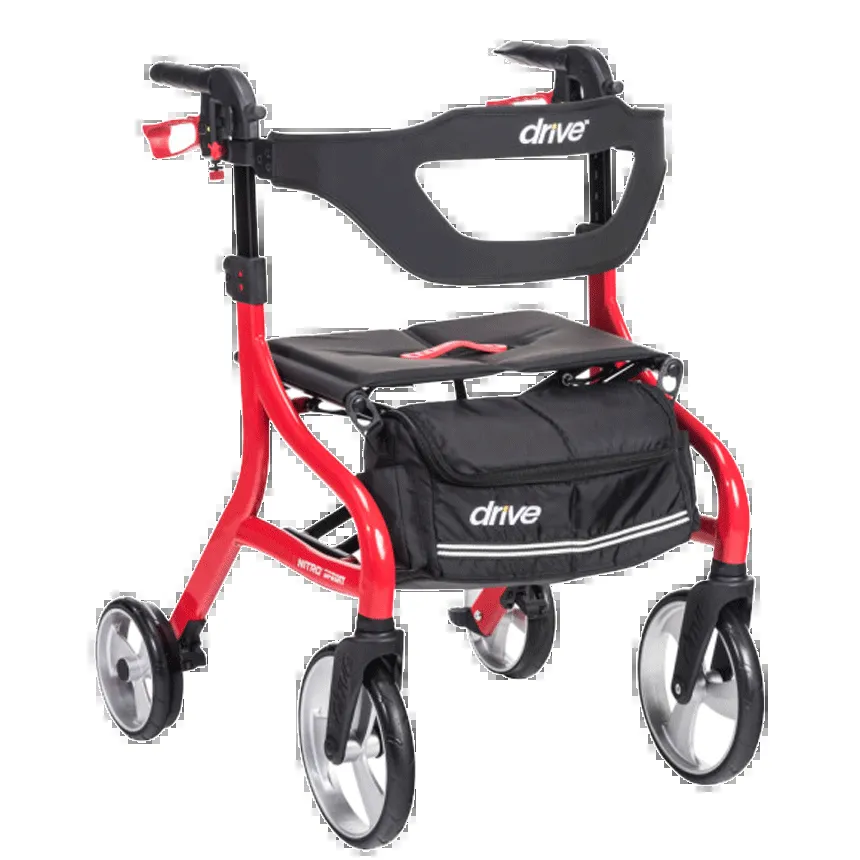
Rollator walkers have four wheels and hand brakes, providing continuous support without needing to be lifted, which can help seniors who are unsteady keep their balance while walking.
Safety & Stability:
Modern rollators are designed for stability and ease of maneuvering. For example, the Drive Nitro rollator shown has a wide wheelbase and 10” front wheels that improve stability over diverse terrain.
Clinical evidence supports the safety of rollators when used properly: a lab study with Parkinson’s patients found that a four-wheeled walker resulted in more consistent gait and improved mobility and safety measures compared to canes or standard walkers.
It was the only device (besides a specialty U-Step walker) that did not significantly slow walking speed, indicating it allows a more natural gait.
Many rollators also come with a built-in seat and backrest, an important safety feature for those with limited endurance – seniors can sit and rest anytime to avoid dizziness or fatigue-related falls.
Ergonomic Features:
Rollators have height-adjustable handles with ergonomic grips to promote better posture and control.
Hand brakes enhance safety – users squeeze to slow down or lock the wheels when stopping or sitting.
But on low-energy or high-risk days, It’s always preferable to stick to a bed exercise routine to keep legs active without unsafe transfers.
Ease of Use:
Because it rolls, a four-wheel walker requires less effort than a standard walker for continuous walking and is easier for those with limited arm strength.
However, caution is needed: For seniors with very poor balance or cognitive impairment, a rollator can roll forward if used incorrectly.
When memory or judgment is affected, tailored dementia care guidance helps adapt mobility safely
Healthcare experts advise that the user must be able to operate the brakes reliably and not lean too far forward.
When used correctly (i.e. staying upright, keeping the rollator close, and activating brakes when needed), rollators greatly improve mobility confidence.
They are often recommended for individuals who have mild to moderate balance problems but still have the strength and awareness to control a rolling device.
In summary, a four-wheeled rollator offers a superb blend of mobility, convenience, and support – it enables a more natural walking rhythm and provides a handy seat, while still significantly enhancing stability for many seniors.
Upright Forearm Walker (Upright Rollator e.g. UPWalker)
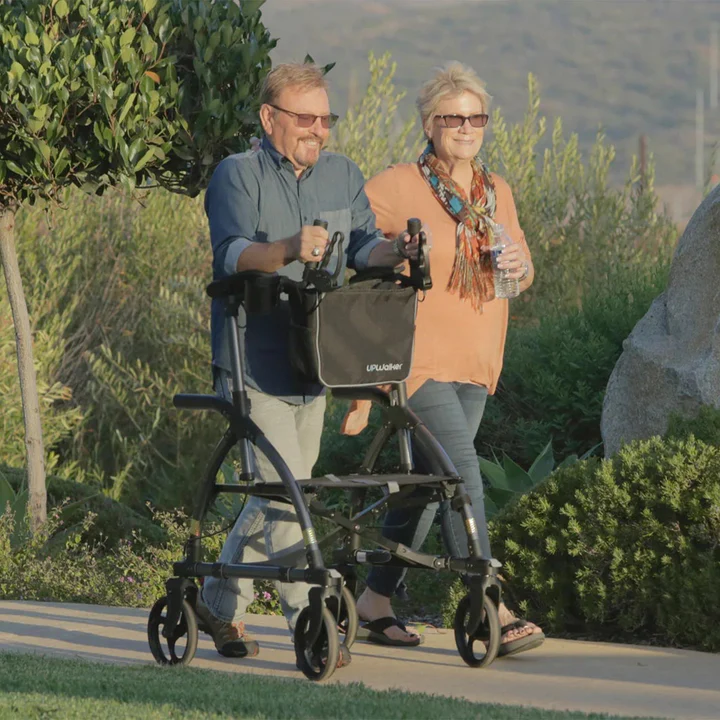
Upright walkers are a newer category of rollators that include forearm-height armrests or platforms, enabling the user to walk fully upright rather than hunching over.
The UPWalker (shown above) is a leading example designed to improve posture, stability, and weight distribution.
Safety & Stability:
The upright design shifts much of the user’s weight to be supported through the forearms and the sturdy frame, which can increase balance and reduce stress on the legs.
A clinical study by researchers at the Shirley Ryan AbilityLab found that using a forearm support walker led to significantly reduced trunk sway (better steadiness) and improved gait efficiency in older adults, compared to a standard rollator walker.
To hold that upright trunk between walks, add seated core work that is safe even for unsteady users.
Users were able to offload up to 40–46% of their body weight through the forearm supports, which means less weight on weak legs or painful joints.
Many users subjectively report feeling safer and more secure with an upright walker – in a 30-person trial, a majority said the forearm-support walker felt more stable and durable than their regular walker or rollator.
The design typically includes 4 wheels and hand brakes (like a rollator) for maneuverability, but with a higher frame and armrests for support.
The base is usually widened for stability; for example, the UPWalker has an extra-wide aluminum frame and a balanced center-of-gravity design to resist tipping.
Ergonomics & Health Benefits:
The key advantage is upright posture – seniors can stand straight, looking forward, which not only improves balance (less forward lean) but can reduce back and neck pain caused by stooping.
By keeping the user’s torso upright, these walkers help open up the chest for easier breathing and can even improve confidence and social engagement (eye-level interaction). The forearm pads and ergonomic handles support the arms comfortably, often with adjustable height to suit the user.
A study in Archives of Physical Medicine and Rehabilitation noted that walking with a forearm-support upright walker required less energy and oxygen for participants, allowing them to walk longer distances with less effort.
Ease of Use:
Upright walkers typically have a seat and backrest like rollators, so users can safely sit when needed; they also include easy-fold mechanisms despite the taller frame.
They are slightly heavier than a basic rollator due to the additional frame, but still designed for indoor/outdoor use with wheels that handle thresholds and small bumps well.
Physical therapists often recommend upright walkers for individuals who have balance issues coupled with back pain or poor posture, or anyone who felt unsafe leaning on low walker handles.
By combining the stability of a rollator with a posture-friendly design, upright walkers like the UPWalker allow seniors with balance problems to move with greater safety, comfort, and dignity.
U-Step Neuro Walker (Advanced Stability Walker for Neurological Conditions)
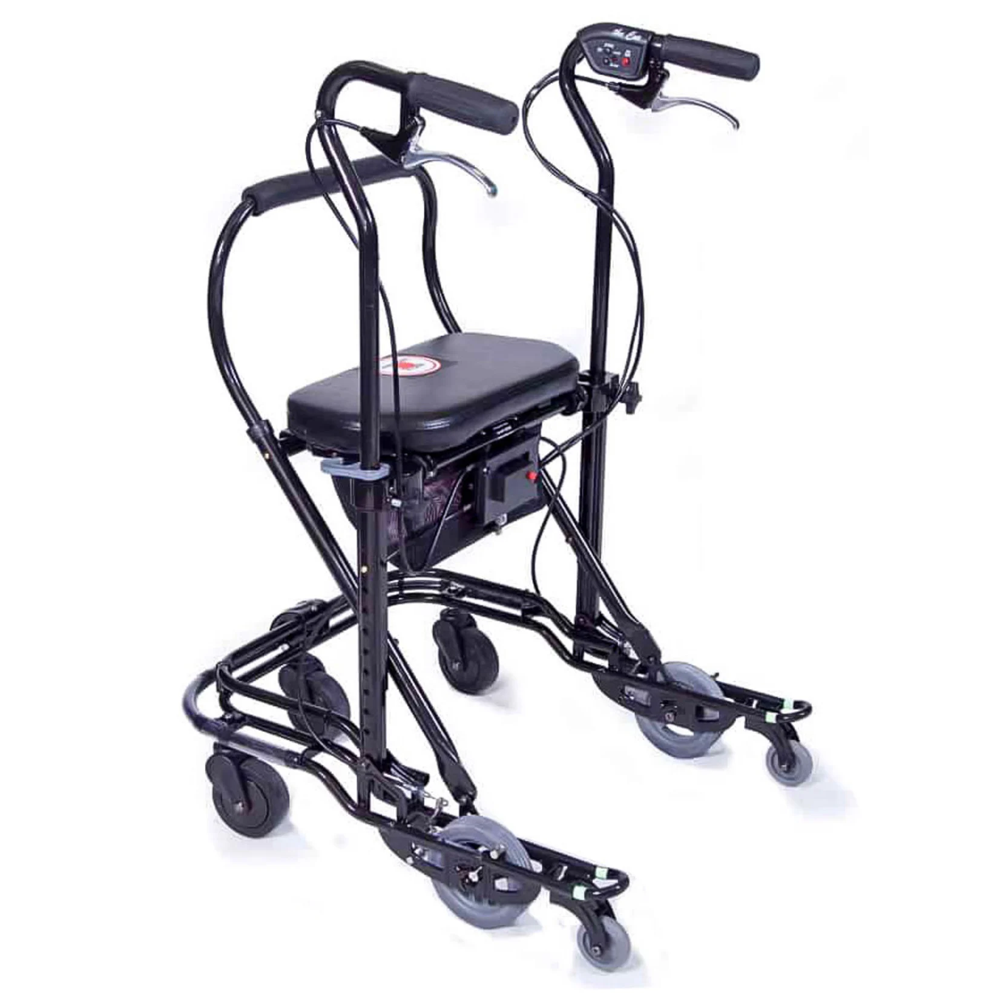
The U-Step Neuro Walker is a highly specialized walker engineered for seniors with severe balance problems, particularly those with neurological conditions like Parkinson’s disease.
It has a distinctive “U-shaped” base that wraps around the user, and a reversed braking system for maximum safety.
Safety & Stability:
This walker was designed to prevent falls in people with very unstable gait.
The patented U-shaped frame surrounds the user and braces in every direction, effectively stabilizing movements and preventing tipping better than standard walkers.
The U-Step’s weight is slightly heavier and lower to the ground than a typical rollator, and optional add-on weights can further lower its center of gravity. In practice, this means the walker won’t easily flip or slide even if the user loses balance momentarily.
Its 7-wheel configuration (with two rear casters and five contact points around) allows it to turn in a tight radius (~29 inches, compared to ~50 inches for other walkers), so users can navigate small spaces without losing stability.
The most lauded feature is the reverse braking system: the U-Step’s default state is locked (wheels braked) until the user squeezes a brake handle to allow movement.
If the user releases the handle or loses grip, the walker immediately stops rolling, which prevents the walker from rolling away unexpectedly.
This is a critical safety mechanism for those with balance or freezing gait issues – essentially, the walker will not move unless the user is deliberately ready to take a step, eliminating runaway rollator accidents.
The resistance of the wheels is also adjustable, so a therapist or user can increase rolling resistance for more control (helpful on slopes or for those who tend to walk too fast).
Ergonomic Features:
The U-Step comes with a padded seat and backrest for resting, and it only engages the seat when the brakes are locked, ensuring a secure seat (the reverse brake means it’s automatically stable when one sits).
The handle height is fully adjustable and can even be configured for one-handed use (important for stroke patients with one-sided weakness).
Many U-Step models offer a Laser and Sound cue module: a laser line projects on the floor and an audible metronome can play, which serve as cues to help Parkinson’s patients overcome gait freezing and maintain a steady stride.
This feature has been a “game-changer” in clinical settings, often dramatically improving walking fluidity for those who need external cues.
Medical Endorsements & Use:
The U-Step is often prescribed by neurologists and physical therapists for patients with Parkinson’s, multiple sclerosis, stroke, or other conditions with severe balance impairment.
It is covered by Medicare as a medically necessary walker (coded as E0147) for qualifying patients.
Therapists praise the U-Step for enabling even those with very high fall risk to walk more independently: its stability and controlled maneuvering give the user time to react and prevents falls during episodes of freezing or loss of balance.
Many patient testimonials cite regained confidence: users feel “less afraid of falling” and able to walk farther with the U-Step than with other devices, markedly improving their quality of life.
In summary, the U-Step Neuro Walker is a solid stability walker – with its surround-style frame and smart braking, it provides unmatched support and control for seniors with serious balance challenges.
It is an ideal choice when standard walkers or rollators are not sufficient to ensure safety, giving even very unsteady individuals a chance to ambulate with a much lower risk of falls.
A Different Way to Think About Walkers
We often think of walkers as symbols of decline, as if using one means life has somehow shrunk. But the truth is the opposite.
The right walker takes a living room that feels unsafe and turns it into a whole neighborhood that can be walked again. It turns fear of falling into freedom to move. It turns hesitation into confidence.
Each walker above, from the simplest two-wheeled frame to the most advanced U-Step Neuro is an invitation.
An invitation to say yes to going outside, yes to meeting friends, yes to moving through your day without that constant worry of “what if I fall?”
The best walker is the one that lets a senior forget they’re using a walker.
When safety and balance are taken care of, life can get back to being about what matters: conversations, fresh air, independence, and dignity. That’s the real value here.








